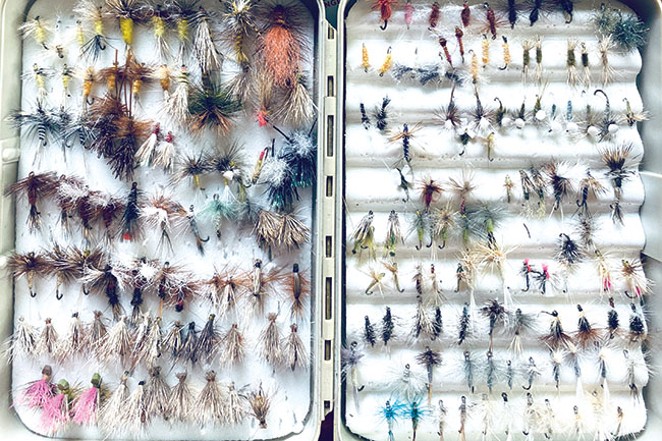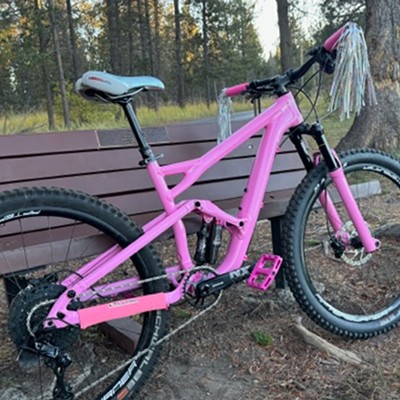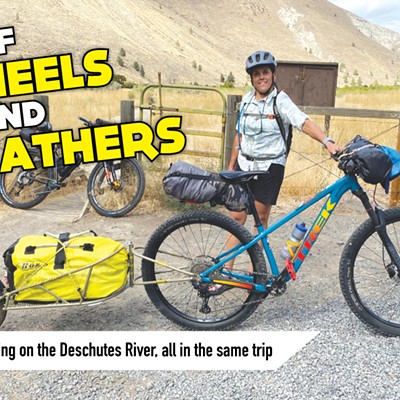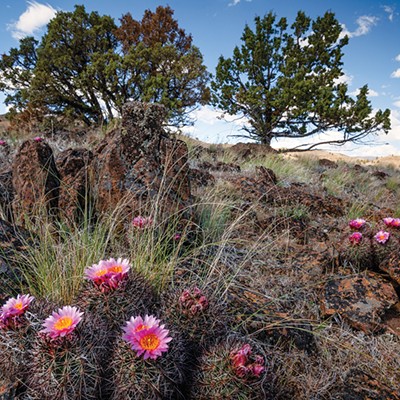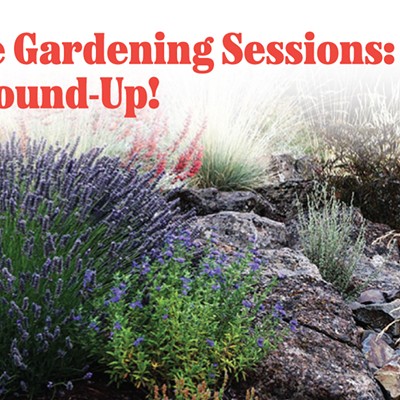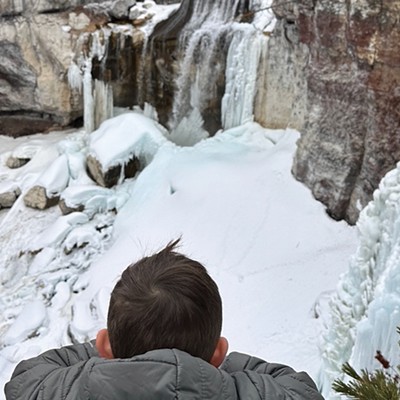"O, sir, doubt not that Angling is an art; is it not an art to deceive a trout with an artificial fly?" - Izaac Walton
There is a section of water in Central Oregon where the perfect recreational scenario is unfolding. A hungry trout is nestled behind a large boulder, waiting for a delicious treat to come into its sights. On the shore above this rainbow-colored denizen is a fly fisher. Crouched low to remain invisible, they cast a fly upstream of the hungry fish. As the fly floats in the current, the trout makes an immediate and committing decision to eat it. The fly line becomes tight as the fish begins to pull, bending the fisher's fly rod into an arc and ripping line from the reel as it powers across the stream in attempt to evade its captor. Moments later the fish is landed, honored for its beauty, revived and released back to its watery habitat. A perfect moment made even more special, because the successfully presented fly was made by the fly fisher themself.
String and feather
Since the 2nd Century, anglers have been using materials such as thread, feathers and beads to imitate the bugs that fish love to eat. From the wormy looking nymph to the archetypical dry fly, imitation flies are as diverse as art in a gallery. With hundreds of species of insects wiggling and flying around, choosing where to start can be a daunting task.
Joe Lewis, manager at Fly and Field in Bend, says, "A good way to get started is to pick patterns that you will be using for your entire fly fishing career. I always like to start with the Wooly Bugger, because you can tie it small or large, in any color, and can fish it in lakes and streams for warm or coldwater species (like bass or trout)."
The Wooly Bugger is a subsurface fly that articulates in the water like a leach or small fish, and should be in every fly angler's selection. Having various sizes and colors of each pattern is also helpful in unlocking the fish catching code.
"When it comes to color, you always want to use opposite ends of the spectrum," Lewis said. "If you tie up one in black, make another one in white. You always want some variance in both the size and color of your patterns," he says. Other popular fish catching patterns include the Pheasant Tail and Midge. "Especially here in Central Oregon, (those three) patterns represent a food source that are prevalent year around," says Lewis.
Tools of the trade
Peter Bowers has owned and operated The Patient Angler for the past 25 years, and when not chasing local trout and steelhead, he is at his Third Street shop, sharing the stoke of flyfishing and fly tying.
"I got started because it just became part of the game, the obsession," says Bowers of how he began tying his own flies. "It was just part of the game. Tying (my own) makes the art come full circle and gives you some connection to fishing during the times when you are not on the water," he said. "As you begin to get into the bug world more, the entomology, you realize that you have the option to tweak things and make them better," says Bowers.
Fishing as a hobby can become expensive, and the more one fishes, the more tackle one will need. Bowers says "when you fish a lot, you can also save money by tying your own." For the beginner, getting your toolkit started will only cost about $75.
"You are going to build up your tool kit, materials library and skills, as time goes by," says Bowers. "But by far the most important advice is to learn the basic techniques of tying a fly," he suggested. "Putting the hook in a vise, turning the thread and how to stack and balance the materials is best learned in the beginning from an instructor."
Most newbies start with a single pattern, and Bowers suggests purchasing materials specific to the fly one intends to make. "Just like baking a cake, tying involves a recipe. Start with the ingredients you need, make your fly, then move to the next recipe," he said. "Many materials are used for multiple styles, so as your journey (flows) along, you will need to pick up fewer and fewer items." Additionally Bowers recommends shying away from pre-made kits and online materials. "Good flies are made from good materials and a local shop is (absolutely) the best way to get them."
"Poets talk about 'spots of time,' but it is really the fishermen who experience eternity compressed into a moment. No one can tell what a spot of time is until suddenly the whole world is a fish and the fish is gone." -Norman Maclean

